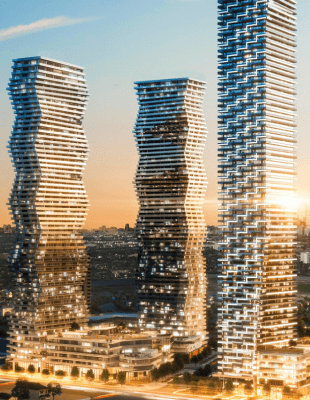Arcadis’ recent report Supercharging Net Zero set out the stark challenge that the world, not least Australia, faces in shifting to a net-zero carbon economy.
It confirms the pathways for Australia and other major economies to transition to net zero by 2050 – in time to limit global warming to 1.5°C – look impossibly steep. In Australia’s case, it means halving emissions within two years, something most agree will not happen.
Nevertheless, momentum toward decarbonisation in Australia is building and clear target setting now seems inevitable. The NSW Government last week announced it would seek to halve emissions by 2030 as part of its pathway to reaching net zero by 2050.
The transition presents many challenges, but I’m optimistic that once the political debate is settled, we will see progress continue to accelerate. It will mean integrating a carbon lens into everything we do as Arcadis, and major infrastructure projects are abundant with opportunity.
According to Infrastructure Partnerships Australia’s latest budget monitor, in 2020-21 governments in Australia collectively allocated $225 billion to fund infrastructure projects over the four years to 2023-24. It is safe to predict that a significant part of this funding will be directed toward metro rail projects and related precinct development.
Traditionally large projects have the potential to achieve net zero easily through the purchase of enough carbon offsets to balance out the emissions associated with the project. But offsetting should be considered as a last resort given the lack of certainty around their management. More importantly, it’s also not a very efficient or cost-effective solution and can lead to missed opportunities for creating social and environmental legacy.
The much bigger opportunity is to integrate low or zero-carbon concerns into the project design, minimising or avoiding carbon inputs throughout and setting new benchmarks for positive impact upon completion. Sustainability is the new business-as-usual; if we are to have any hope of limiting the impact of climate change, we need to both decarbonise aggressively and actively seek out opportunities to be net positive. In other words, to put more back into the environment, society and the economy than we take out. That means a modern and innovative approach to planning, procuring and delivering major infrastructure projects.
Fortunately, when considering major projects currently on the design board we have the advantage of being able to apply learnings from similar projects elsewhere. A few come to mind: Sydney Metro Northwest and Sydney Light Rail (both now operating), and Sydney Metro City & Southwest, Western Sydney Airport, Parramatta Light Rail and Melbourne Metro (all under construction).
Each of these projects offers valuable insights to build on our approach to designing future metro rail projects. Specifically, they give us a template for future-proofing new urban rail lines and ensuring they leave a sustainable legacy for generations to come.
Future-proofing urban rail means accommodating technology that might not be in widespread use (or even exist) today but may well be some time after the rail line opens. We can glimpse what that technology might be – Mobility as a Service (MaaS) apps, AI and robotics, and electric-vehicle charging points, for example. We need to think what the local communities, labour force and environment might look like in the future and design transport networks and surrounding neighbourhoods and precincts accordingly.
On carbon, the key take-away is the need to front-end sustainability concerns in the project design. Based on my own experience consulting to Parramatta Light Rail, the benefits of doing so are clear. Sustainability was built in from the business case stage and evolved through planning with a whole-of-life mindset. This meant the contract dovetailed cleanly with delivery and operation; in other words, we loaded the sustainability gun and had the delivery and operational teams fire it.
Sustainable design must span the lifecycle of any project, which could be 100 years in some cases. Rather than relying on offsets, we need to first explore and implement feasible initiatives that reduce or eliminate emissions from the process of constructing and operating projects over their life. It starts with the supply chain and design and selection of construction materials, to reduce embodied energy. Further, can the project upskill and utilise local labour in construction? Should it incorporate training centres to build local capabilities?
Then, once the project up and running, it’s not a stretch to suggest precincts and associated infrastructure could have a pivotal role to play influencing community behaviour by incorporating energy-efficiency education into daily operations.
While challenging, the impetus to decarbonisation opens up interesting considerations in the design of major infrastructure projects. State Governments contemplating new metro rail lines have a clean slate to apply hard-earned learnings to making sure projects are aligned from start to finish with the net-zero carbon agenda.






